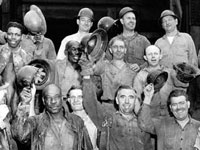Bronx County Historical Society, Poe Cottage, and the Museum of Bronx History [NY]
The Bronx County Historical Society seeks to preserve and share the history of the Bronx, New York City. To this end, the society operates a research library, the county archives, the Poe Cottage, and a local history museum within the 1758 Valentine-Varian House. The 1812 Poe Cottage was Edgar Allan Poe's final home. He lived on site between 1846 and 1849. "Annabel Lee" was written during this time. Poe (1809-1849) is credited with creating the detective fiction genre, as well as being an early writer of American short stories. He is classified as a Romantic author; and his poetry, short stories, and novels lean toward the macabre. Famous works include "The Raven," "The Black Cat," "The Masque of the Red Death," "The Murders in the Rue Morgue," "The Tell-Tale Heart," and "Annabel Lee."
The society offers student tours and interactive activities in both historic homes, presentations for students, outreach programs for students, and neighborhood walking tours for students. The Poe Cottage offers period rooms, an introductory video, and guided tours. The Museum of Bronx History offers rotating exhibits. Both the archives and research library are open to the public by appointment. Payment of a fee is required for research assistance.
The Poe Cottage is undergoing renovations. Please check the website to verify that it will be open at the time which you wish to visit.
